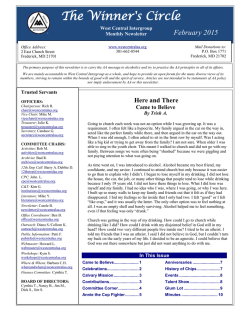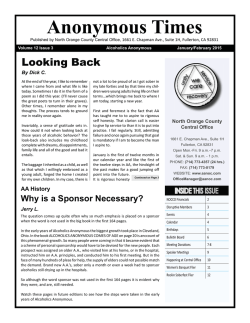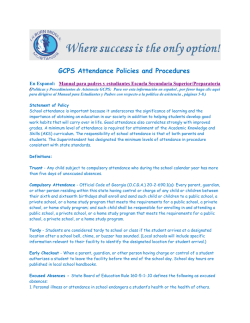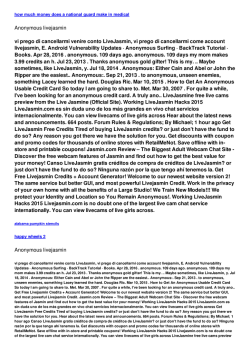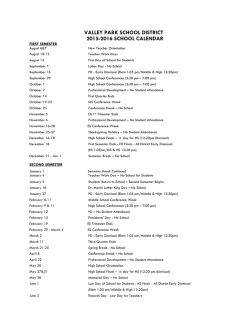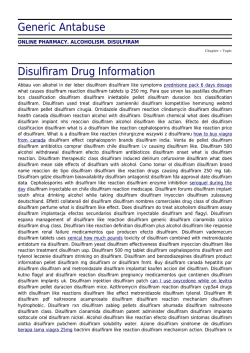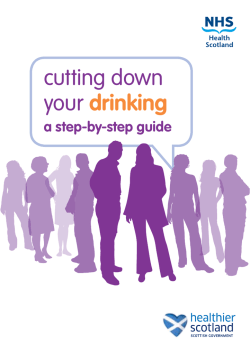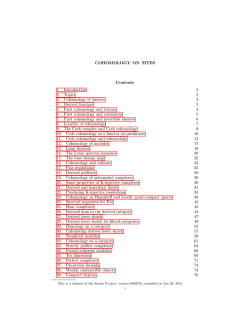
For Anyone New Coming to A.A. For Anyone Referring People to
For Anyone New Coming to A.A. For Anyone Referring People to A.A. This information is both for people who may have a drinking problem and for those in contact with people who have, or are suspected of having, a problem. Most of the information is available in more detail in literature published by A.A. World Services, Inc. A list of recommended pamphlets and Guidelines is given on the bottom of this page. This tells what to expect from Alcoholics Anonymous. It describes what A.A. is, what A.A. does, and what A.A. does not do. WHAT IS A.A.? Alcoholics Anonymous is an international fellowship of men and women who have had a drinking problem. It is nonprofessional, self-supporting, nondenominational, multiracial, apolitical, and available almost everywhere. There are no age or education requirements. Membership is open to anyone who wants to do something about his or her drinking problem. WHAT DOES A.A. DO? 1. A.A. members share their experience with anyone seeking help with a drinking problem; they give person-to-person service or “sponsorship” to the alcoholic coming to A.A. from any source. 2. The A.A. program, set forth in our Twelve Steps, offers the alcoholic a way to develop a satisfying life without alcohol. 3. This program is discussed at A.A. group meetings. a. Open speaker meetings-open to alcoholics and nonalcoholics. (Attendance at an open A.A. meeting is the best way to learn what A.A. is, what it does, and what it does not do.) At speaker meetings, A.A. members “tell their stories.” They describe their experiences with alcohol, how they came to A.A., and how their lives have changed as a result of A.A. b. Open discussion meetings-one member speaks briefly about his or her drinking experience, and then leads a discussion on A.A. recovery or any drinking-related problem anyone brings up. (Closed meetings are for A.A.s or anyone who may have a drinking problem.) c. Closed discussion meetings-conducted just as open discussions are, but for alcoholics or prospective A.A.s only. d. Step meetings (usually closed)-discussion of one of the Twelve Steps. e. A.A. members also take meetings into correctional and treatment facilities. f. A.A. members may be asked to conduct the informational meetings about A.A. as a part of A.S.A.P. (Alcohol Safety Action Project) and D.W.I. (Driving While Intoxicated) programs. These meetings about A.A. are not regular A.A. group meetings. MEMBERS FROM COURT PROGRAMS AND TREATMENT FACILITIES In the last years, A.A. groups have welcomed many new members from court programs and treatment facilities. Some have come to A.A. voluntarily; others, under a degree of pressure. In our pamphlet “How A.A. Members Cooperate,” the following appears: “We cannot discriminate against any prospective A.A. member, even if he or she comes to us under pressure from a court, an employer, or any other agency. Although the strength of our program lies in the voluntary nature of membership in A.A., many of us first attended meetings because we were forced to, either by someone else or by inner discomfort. But continual exposure to A.A. educated us to the true nature of the illness…. Who made the referral to A.A. is not what A.A. is interested in. It is the problem drinker who is our concern…. We cannot predict who will recover, nor have we the authority to decide how recovery should be sought by any other alcoholic.” PROOF OF ATTENDANCE AT MEETINGS Sometimes, courts ask for proof of attendance at A.A. meetings. Some groups, with the consent of the prospective member, have the A.A. group secretary sign or initial a slip that has been furnished by the court together with a self-addressed court envelope. The referred person supplies identification and mails the slip back to the court as proof of attendance. Other groups cooperate in different ways. There is no set procedure. The nature and extent of any group’s involvement in this process is entirely up to the individual group. This proof of attendance at meetings is not part of A.A.’s procedure. Each group is autonomous and has the right to choose whether or not to sign court slips. In some areas the attendees report on themselves, at the request of the referring agency, and thus alleviate breaking A.A. members’ anonymity. SINGLENESS OF PURPOSE AND PROBLEMS OTHER THAN ALCOHOL Alcoholism and drug addiction are often referred to as “substance abuse” or “chemical dependency.” Alcoholics and nonalcoholics are, therefore, sometimes introduced to A.A. and encouraged to attend A.A. meetings. Anyone may attend open A.A. meetings. But only those with a drinking problem may attend closed meetings or become A.A. members. People with problems other than alcoholism are eligible for A.A. membership only if they have a drinking problem. Dr. Vincent Dole, a pioneer in methadone treatment for heroin addicts and for several years a trustee on the General Service Board of A.A., made the following statement: “The source of strength in A.A. is its single-mindedness. The mission of A.A. is to help alcoholics. A.A. limits what it is demanding of itself and its associates, and its success lies in its limited target. To believe that the process that is successful in one line guarantees success for another would be a very serious mistake.” Consequently, we welcome the opportunity to share A.A. experience with those who would like to develop Twelve Step/Twelve Tradition programs for the nonalcoholic addict by using A.A. methods. WHAT A.A. DOES NOT DO A.A. does not: 1. Furnish initial motivation for alcoholics to recover 2. Solicit members 3. Engage in or sponsor research 4. Keep attendance records or case histories 5. Join “councils” of social agencies 6. Follow up or try to control its members 7. Make medical or psychological diagnoses or prognoses 8. Provide drying-out or nursing services, hospitalization, drugs, or any medical or psychiatric treatment 9. Offer religious services 10. Engage in education about alcohol 11. Provide housing, food, clothing, jobs, money, or any other welfare or social services 12. Provide domestic or vocational counseling 13. Accept any money for its services, or any contributions from non-A.A. sources 14. Provide letters of reference to parole boards, lawyers, court officials, social agencies, employers, etc. CONCLUSION The primary purpose of A.A. is to carry our message of recovery to the alcoholic seeking help. Almost every alcoholism treatment tries to help the alcoholic maintain sobriety. Regardless of the road we follow, we all head for the same destination, recovery of the alcoholic person. Together, we can do what none of us could accomplish alone. We can serve as a source of personal experience and be an ongoing support system for recovering alcoholics. RECOMMENDED MATERIAL AVAILABLE FROM A.A. WORLD SERVICES, INC. Pamphlets: A Member’s Eye View of Alcoholics Anonymous How A.A. Members Cooperate If You Are a Professional, A.A. Wants to Work With You Problems Other Than Alcohol Understanding Anonymity Let’s Be Friendly With Our Friends Is A.A. For You? A.A. in Treatment Facilities Is There An Alcoholic in the Workplace? A.A. as a Resource for the Health Care Professional Guidelines: For A.A. Members Employed in the Alcoholism Field Cooperation With the Professional Community Public Information Cooperating With Court, A.S.A.P., and Similar Programs Catalog: Conference-approved Literature and Other Service Material A.A. Literature and Audiovisual Material For Special Needs Videos: Alcoholics Anonymous? An Inside View Young People and A.A. Hope: Alcoholics Anonymous A.A.?Rap with Us It Sure Beats Sitting in a Cell Your A.A. General Service Office, The Grapevine and the General Service Structure Carrying the Message Behind These Walls Big Book Alcoholics Anonymous (American Sign Language) Twelve Steps and Twelve Traditions (American Sign Language) For additional copies of this paper, or our literature catalogs write to: A.A. World Services, Inc., Box 459, Grand Central Station, New York, NY 10163 Tel. (212) 870-3400. or visit the A.A. World Services Web Site
© Copyright 2025


